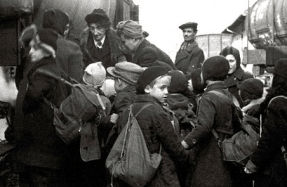THE LAST DAYS OF HITLER

Adolf Hitler – Nazi Germany’s Führer – was a nomad. From his accession to power in 1933 and throughout the years of war, he was a dictator of ‘no fixed abode’. Officially Hitler resided at the Reich Chancellery in Berlin, but as the war went on he wandered across Europe, staying away from the capital and setting up home at any one of his 20 Führer Headquarters (Führerhauptquartiere). His favourites were the Berghof near Berchtesgaden in Bavaria, and the Wolf’s Lair (the Wolfsschanze) in East Prussia. But as the war turned against Germany in the autumn of 1944, he decamped to the Eagle’s Nest (the Adlerhorst) near Bad Nauheim in Hesse to plan and oversee his final role of the dice in the West: Unternehmen Herbstnebel (Operation Autumn Mist), the Ardennes offensive that would become famous as the Battle of the Bulge. With the failure of the attack – and its baby sister offensive, Nordwind, to the south – Hitler and his entourage made what would become their final move of the war as they headed northeast and arrived in Berlin on 16 January 1945. There, deciding against setting up shop in his so-called Führerwohnung (Leader apartment) on the upper floor of the Reich Chancellery, he opted instead for a complex of offices, tunnels and storage rooms that had been constructed almost 30 feet under the Chancellery garden – the Führerbunker.
THE BUNKER
As Hitler descended the stairs through the upper – Vorbunker – level and went through the steel blast door down into the newer, lower level, few of the 30-or-so staff who went with him could guess that this would be the dictator’s last refuge. He would not leave it alive.
At first, Hitler would only sleep in the bunker, ascending from it in the afternoons for his daily top-level military conference in the Chancellery. There, surrounded by his senior officers, he
You’re reading a preview, subscribe to read more.
Start your free 30 days



